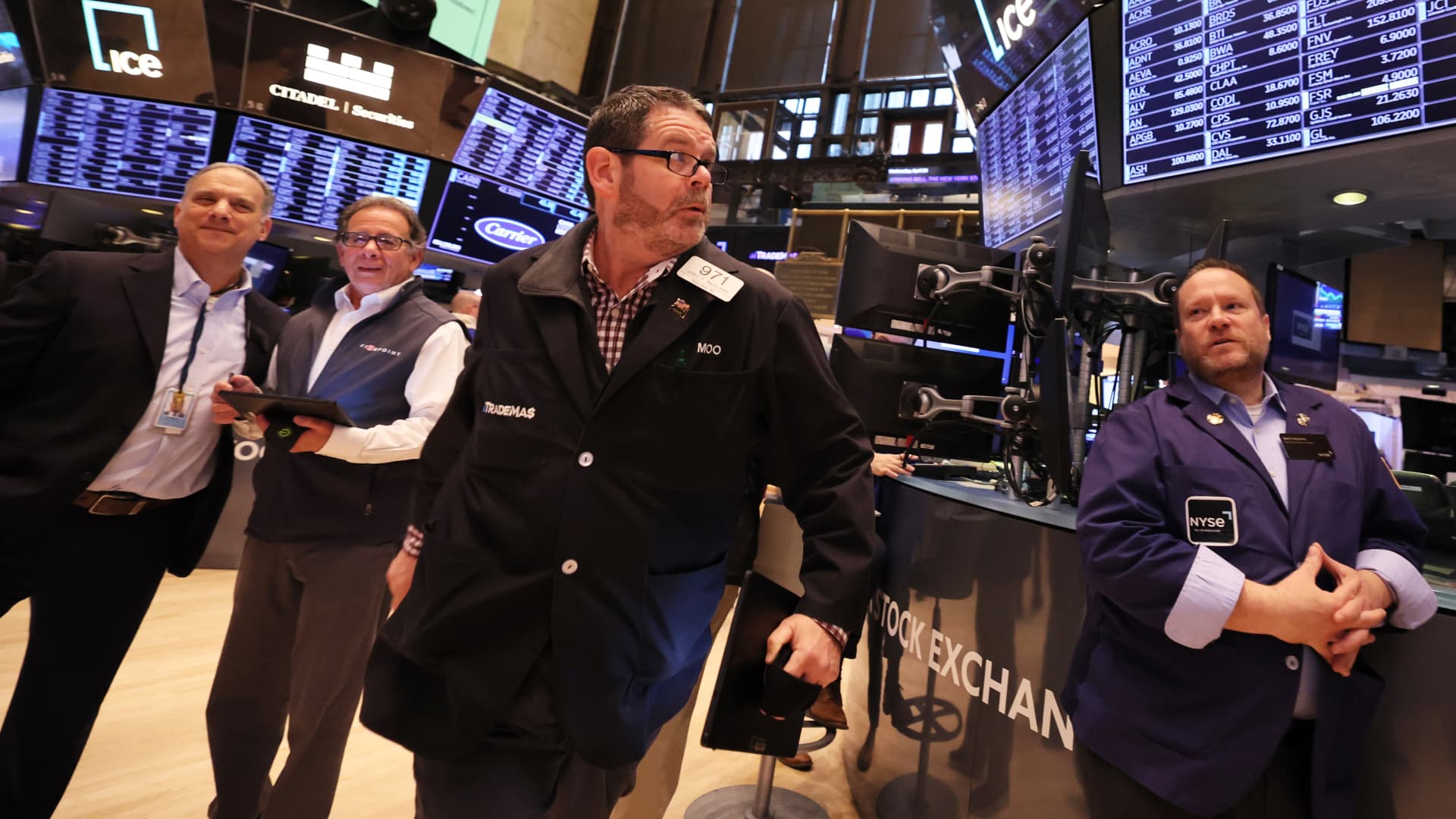
Can the Nasdaq already have run too far when it’s only come halfway back? This is a key question newly posed by the latest spurt higher in the Nasdaq-100 , which has now recaptured just over half of its bear-market losses from the November 2021 closing high to its fourth-quarter 2022 low. In the process, the NDX and the half-dozen enormous growth stocks that dominate it have boosted the S & P 500 to the top of its nine-month range while drawing scorn from many unpleasable investors who worry that the recent rally is too narrow, too top-heavy and too reliant on artificial intelligence hype to be trusted. This particular conversation has been chewed over pretty thoroughly, and I’ve hit on it last week and the week before . Suffice to say poor market breath is neither ideal nor fatal for a rally, but it would be more worrisome if it encouraged widespread optimism rather than the combination of indignance and half-hearted rationalization that has more been the mode. And perhaps more relevant, last week saw at least tentative signs of a desired broadening out. Recently struggling cyclical groups firmed up. The small-cap Russell 2000 bounced to avert a potentially messy chart breakdown, and regional-bank stocks are now more than 10% above their recent fear-saturated lows. This modest improvement in the non-Big Tech expanses of the market seemed based on the macro and policy paths simply not worsening quickly enough for investors to cut equity exposures even further than current muted levels. The framework for a debt ceiling deal is visible even if the negotiators have incentives to make it seem a longshot until the moment of agreement. Housing numbers, jobless claims and retail sales are all consistent with moderate but positive GDP growth. And while bond yields reversed a bit higher, the chances of the Federal Reserve keeping rates steady next month appear greater, for now, than those for another hike. It’s worth pointing out too that the recent surge in the familiar Nasdaq megacaps has a lot to do with mean reversion, after the Nasdaq lagged the equal-weighted S & P 500 in 2002 by 20 percentage points. The NDX has been in a long-term structural uptrend relative to the S & P 500 for the past decade. As this chart shows, the index burst to a huge upside overshoot of this trend during and after the Covid pandemic, then broke down below it. Now it’s returned to that post-2013 channel, for what it’s worth. The story is roughly the same in terms of valuation. At the late-2021 peak, the NDX traded at 31 times forward earnings, which fell to 19 times at the late-2022 trough. It’s now back to 25x. The P/E path for Microsoft was 35x to 22x to a current 29x; for Alphabet, 26x to 16x to 21x; and Meta Platforms, 26x to 11x to 19x. The one key outlier, Nvidia , is also the anointed bellwether for artificial-intelligence excitement, now fetching 63-times forecast earnings, nearly back to its peak at 66x. It’s impossible to quantify with confidence how much of the AI narrative is hype, genuine urgent corporate investment and life-changing technology, or the simple ongoing process of software getting smarter and faster — which has been happening for half a century. It’s certainly the new animating narrative for growth investors and perhaps an excuse to goose earnings estimates. But it’s also absolutely the case that, aside from Nvidia, the Big Tech bellwethers traded at more expensive valuations 18 months ago, before anyone had heard about ChatGPT. Whatever the merits of the AI story and granting that the stocks are again trading for stout valuations, the Nasdaq-100 reaching its new 52-week high in 18 months last week is not among the weaknesses in the bullish case. Carson Investment Research looked at all 14 instances since 1985 when the Nasdaq-100 hit a new 52-week high after at least six months without one. Every time, the index was higher one year later for a median gain near 15%, with only one episode — from 1990 — involving a nasty drop in between. All that said, the Nasdaq is running quite hot in the short term, with momentum readings reaching levels seen near the culmination of prior interim rallies in early February and last August. Cantor Fitzgerald said that the Nasdaq-100 hit a relative strength index of 73. Since 2018, the index is only up about half the time in the 20 and 60 days after its RSI topped 70, the firm said. To be sure, there were some pretty big swings in that sample. And while trader positioning and investor sentiment have been broadly cautious, late last week speculators started to chase more aggressively with very high call options volume into Thursday’s ramp. As noted, the S & P 500 touched 4,200 late in the week before easing back a bit. This is broadly viewed as the ceiling of a familiar and stubborn range, and with good reason. The index has only traded above 4,200 for all of 10 trading days in the past year and hasn’t quite closed there so far this year. (Though unlike the last near approach of 4,200 in early February, the 50- and 200-day trends are both tilted higher now.) With Friday’s monthly options expiration out of the way, the market sometimes trades “looser” with less gravitational pull around round-number nodes of clustered wagers, such as 4,150 and 4,200. Some downside chop, sloppier rotation and digestion should be expected before long, if not right away. It’s been an uninspiring and uneven climb since October, with late-cycle shadows encroaching on the economy. The market’s resilience in the face of a rolling recession vigil lasting almost a year and a headlong Federal Reserve tightening campaign has built it a cushion to buffer whatever turbulence might strike.
